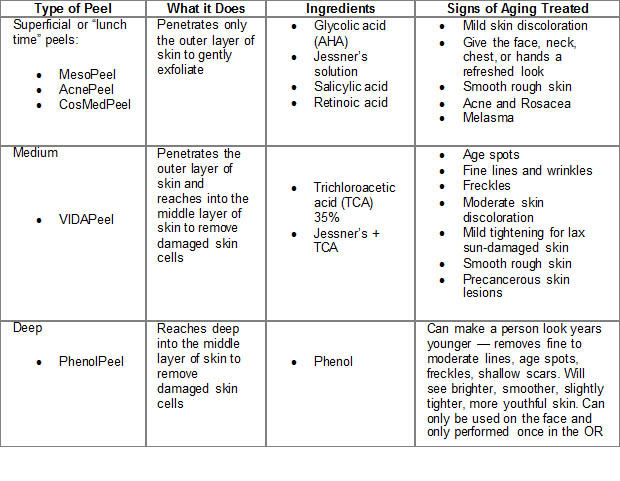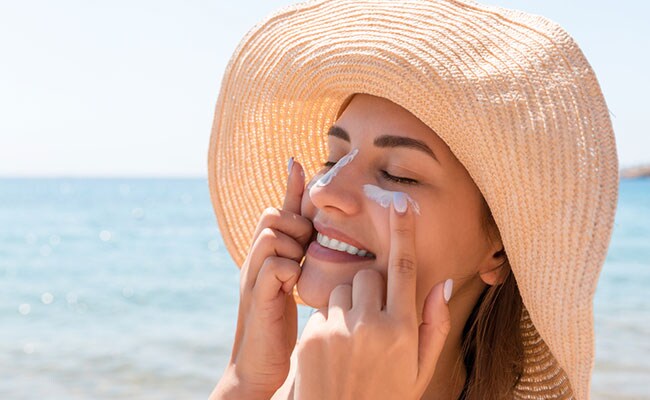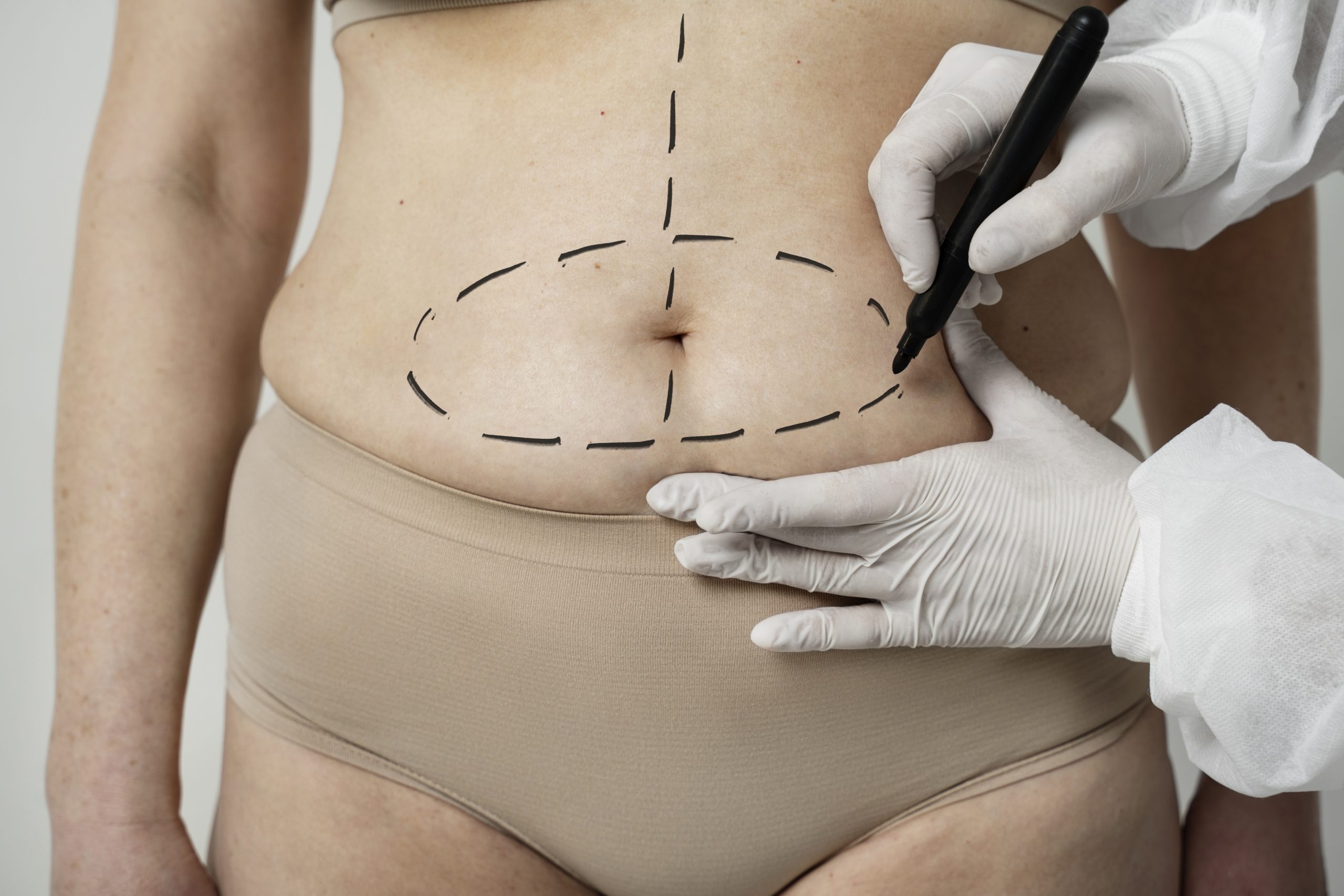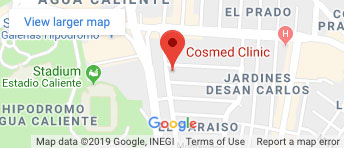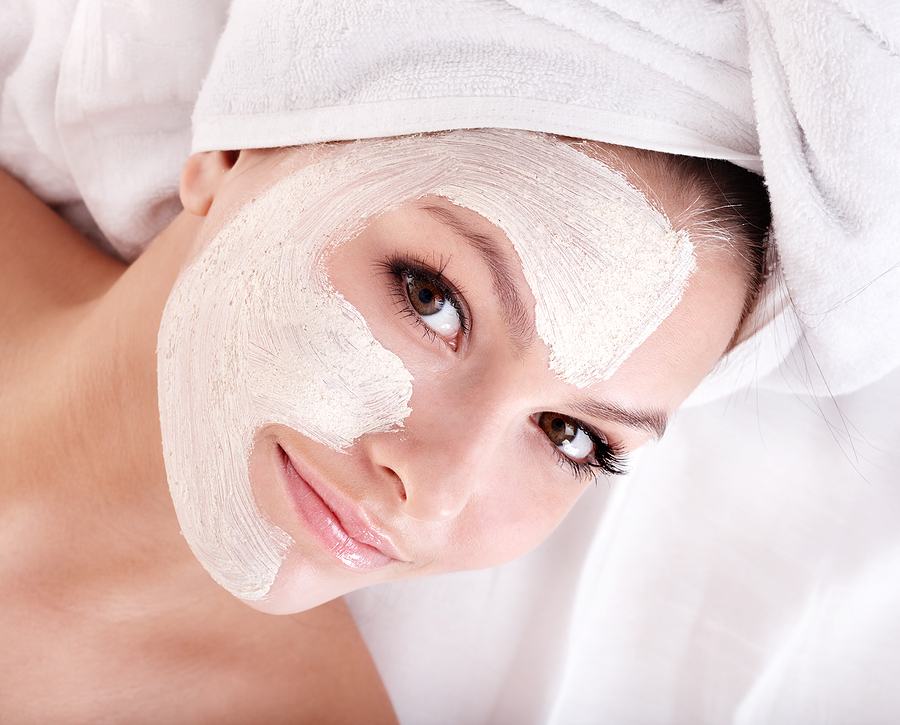
Mild chemical peeling also is popular with younger people. Some people in their 20s and 30s opt for a mild chemical peel to prevent signs of aging from appearing too early.
If you want to diminish fine lines and wrinkles, skin discoloration, a dull complexion or rough skin, your dermatologist may recommend a cosmetic procedure called a chemical peel. For this procedure, medical grade substances (derived from sugar cane, milk, tomato, aspirin) are applied on the skin, peeling away many visible signs of aging on the face, hands, neck, and chest. After the skin heals, fewer wrinkles, less discoloration, and improved texture may be seen. Chemical peeling also is popular with younger people. Some people in their 20s and 30s opt for a mild chemical peel to prevent signs of aging from appearing too early. Acne sufferers may find that chemical peeling helps keep their skin clear. Most of the peels performed are superficial or medium, well tolerated, and with little healing time.
What to Expect Before a Chemical Peel: Choosing The Appropriate Peel
A consultation is essential. Your dermatologist will take a complete medical history. Be sure to tell the dermatologist if you are prone to cold sores, have had a cosmetic procedure in the past, scar easily or have ever had a type of raised scar known as a keloid, took isotretinoin (a prescription medication used to treat severe acne) or pregnant. These can have a tremendous effect on what you see after a chemical peel.
After the consultation and a physical exam that includes a close look at your skin, the dermatologist will tell you if a chemical peel will help diminish the signs of aging that concern you and if a chemical peel is right for you. If a chemical peel is appropriate, one of our CosMed Signature peels will be recommended:
Most medium and deep chemical peels require pre-peel skin care (oral and topical). Usually prescribed for 2 to 4 weeks before the peel, this skin-care plan helps the peel deliver the best results and reduce potential side effects.
What to Expect During a Chemical Peel
Superficial and medium-depth peels are performed in the office. A deep peel is performed in the operation room. General anesthesia (puts the patient to sleep) and monitoring equipment for the heart and lungs may be necessary only for deep peels.
Before applying the peel, the skin is prepped. Once the skin is ready, the dermatologist quickly and evenly applies the peel. As the peel works, the dermatologist watches the skin carefully so that the peel can be stopped and removed at the appropriate time. A tolerable stinging or burning sensation is normal and expected for a couple of minutes, which is ameliorated with air from a fan. After the peel, cool compresses or thermal water may be applied to help soothe the skin. These are usually not necessary for a superficial peel. A mild lotion or cream and sunscreen may be applied after a superficial or medium-depth peel to help soothe the skin, and then you are ready to go. You can restart your skin care regimen 5-10 days after the peel or as directed by the doctor.
*******************************
CosMed’s dermatologist Dr. de la Fuente is a skin expert. He has presented and published scientific articles available at PubMed, Journal of the American Academy of Dermatolgy, Skin and Aging, Clinical and Experimental Dermatology and many more. He also serves as a Dermatology Professor at School of Medicine in Tijuana.
To learn more or schedule your appointment, visit CosMedClinic.com
Click here for more non-surgical ways to rejuvenate your skin available at CosMed’s Medi-Spa

